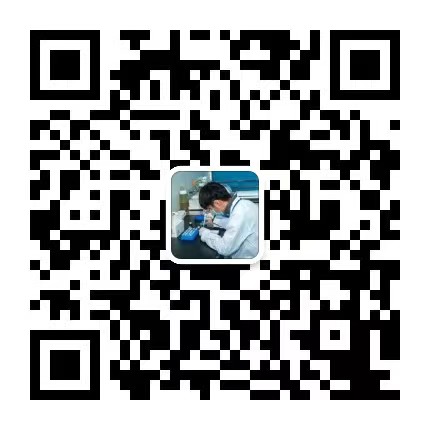How to handle the testing report of the sample? What are the scope and standards of testing? Today, the editor of Baijian Testing will take you to understand the specific tests required for the relevant testing business. At the same time, Baijian can also design testing plans based on corresponding testing standards or according to your needs
Testing process
1. Sending samples
2. Checking requirements
3. Targeted quotation
4. Both parties confirm, sign a contract, and start the experiment
5. Completing the experiment: The testing cycle (can be expedited) may change according to the sample and its testing items/methods, and engineers can be consulted
6. Issuing the testing report and providing post service.
Testing items:
Partial parameters, breaking capacity, size and structure, time/current characteristics, maximum continuous power consumption, marking, fuse temperature, voltage drop, durability test, pulse test, layout of fuse, temperature rise and dissipation power verification, action verification, all items, bending and twisting, tension, thrust, breaking current, mechanical requirements, marking (wiping test), marking, checking Tf, checking Tm and connecting it to electrical strength and insulation test edge resistance.
, Temperature and humidity cycling treatment, temperature testing, creepage distance and electrical clearance, electrical strength (if applicable), electrical strength, electrical clearance, instantaneous overload current, insulation resistance (if applicable), insulation resistance, aging, resistance to electric traces, rust prevention (only for iron components), all parameters, holding temperature, maximum limit temperature, rust prevention, rated operating temperature, 2.1In, weldability, size, mechanical test of terminals, standard rated value, welding heat resistance, rated breaking capacity, High temperature test, holding temperature Th, action temperature, wire firmness test, bending/twisting test, tensile test, thrust test, maximum limit temperature Tm, humidity treatment, limited short circuit test, 2.1 In, mechanical test of terminals, documents to be provided Components, Electrical RequirementsTesting Standards:
1. GB/T 13539.4-2016 IEC 60269-4:2012 Low Voltage Fuses Part 4: Supplementary Requirements for Fuses for Protection of Semiconductor Equipment
2. GB/T 13539.6-2013 IEC 60269-6:2010 Low Voltage Fuses Part 6: Supplementary Requirements for Fuses for Protection of Solar Photovoltaic Systems GB/T 13539.6-2013 IEC 60269-6:2010
3. GB/T 9364.2-2018, GB/T 9364.2-1997, IEC 60127-2:2014, IEC 60127-2:2003+A1: 2003+A2:2010, IEC 60127-2:1989+A1:1995+A2:2000, EN 60127-2:2014, EN 60127-2:2003+A1:2003+A2:2010, BS EN60127-2:2014, J60127-2 (H28) miniature fuses - Part 2: Tubular fuses
4, IEC 60691:2015 Thermal fuse requirements and application guidelines 11.1
5, IEC 60691:2015+C1:2016 Thermal fuse requirements and application guidelines
6, GB/T 13539.6-2013 IEC 60269-6:2010 Low Voltage Fuses Part 6: Supplementary Requirements for Fuses for Protection of Solar Photovoltaic Systems
7. GB/T 9364.2-2018 IEC 60127-2:2014 Small Fuses Part 2: Tubular Fuses GB/T 9364.2-2018 IEC 60127-2:2014 A.5.2
8. CQC1314-2017 Technical Specification for Low Voltage Fuses for 10kV Integrated Column mounted Transformers
9. GB/T 9816.1-2013 IEC 60691:2002+A2:2010 Thermal Fuses Part 1: Requirements and Application Guidelines 11.1
10, J 60691 (2020) Thermal Fuses - Requirements and Application Guidelines
11, EN 60691:2016/A1:2019 Thermal Fuses - Requirements and Application Guidelines
12, IEC 60127-2:2014 Small Fuses Part 2: Tubular Fuses A.5.2
13, IEC 60691-1993 Thermal Fuses - Requirements and Application Guidelines
14 IEC 60691:2002 Requirements and Application Guidelines for Thermal Fuses
15, GB 9364.2-2018 Small Fuses Part 2: Tubular Fuses GB 9364.2-2018 (IEC 60127-2:2014)
16, IEC 60127-2:2003+Amd1:2003+Amd2:2010 Small Fuses Part 2: Tubular Fuses A.4.2
17, GB 9364.2-2018 (IEC 60127-2:2014) Small Fuses Part 2: Tubular Fuses 9.3
18 IEC 60691:2015/AMD1:2019 Thermal Fuses - Requirements and Application Guidelines
19, EN 60691:2016 Thermal Fuses Part 1: Requirements and Application Guidelines
20, IEC 60691 (ed.3): 2002+A1:2006+A2:2010, IEC 60691:2015, EN 60691:2003+A1:2007+A2:2010, J 60691 (H26) Thermal Fuses - Requirements and Application Guidelines 8
Testing Process
1. Sample sending
2. Verification of requirements
3. Targeted quotation
5. Complete the experiment: The testing cycle (can be expedited) may vary depending on the sample and its testing items/methods. You can consult an engineer
6. Issue a testing report and provide later services
